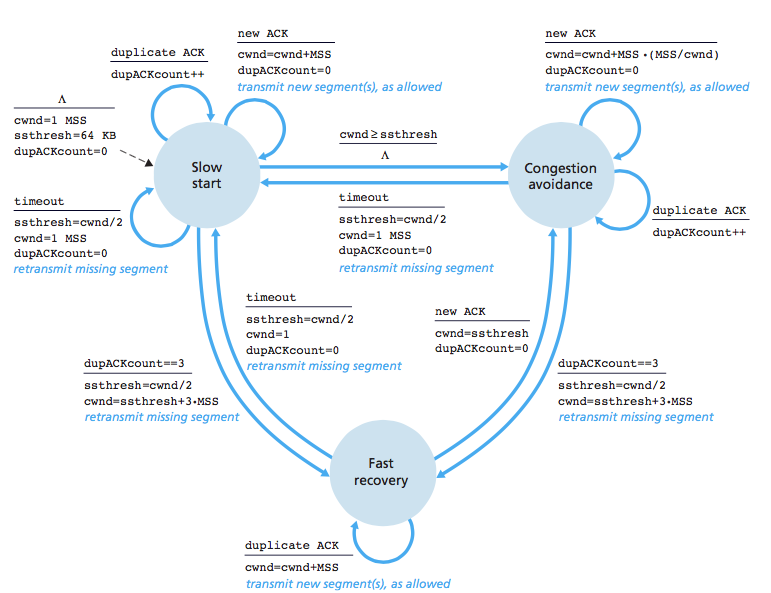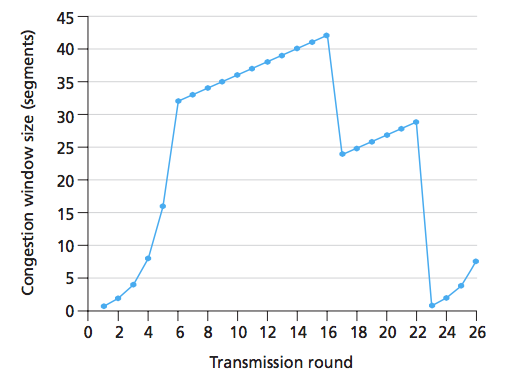BBR: Congestion-Based Congestion Control
I take Network Architecture class this semester. Thus, I’ve decided that I have to understand TCP at least. That’s why I read this paper as a (seems-to-be) state-of-art TCP.
TCP Reno

(excerpt from Computer Networking: A Top Down Approach)

(excerpt from Computer Networking: A Top Down Approach)
TCP congestion control consists of 3 states: Slow start, Fast recovery, Congestion avoidance.
It begins at Slow start where the congestion window size(cwnd) is set 1 Maximum Segment Size(MSS).
TCP sends segments by cwnd at one time until it receives ACK.
In Slow start state, cwnd is increased by 1 MSS every time it receives new ACK, which leads to exponential increase of cwnd.
It is a bit confusing, however, not hard to understand: if you send 4 segments in a round, it is expected to receive 4 ACKs. That leads to increase cwnd 4 times, resulting in 2*cwnd in the end.
If this exponential increase reaches ssthresh, the state chages to Congestion avoidance.
In Congestion avoidance state, each ACK only increases cwnd by MSS*(MSS/cwnd), and ACK happens cwnd\MSS times in a round. Therefore, it makes cwnd increased by 1 MSS in a round, which is a linear increase.
Congestion avoidance state continues until the segment loss occurs, resulting in duplicated ACKs. At the round 16, it enters Fast recovery since the condition dupACKcount==3 in the diagram occurs. Entering Fast recovery state, ssthresh is set to cwnd/2 and cwnd is set to ssthresh+3*MSS, which nearly halves its window size.
Then it enters Congestion avoidance state again, since the ACK of missing segment is received. It continues to the linear increase, then a timeout occurs at round 23. This time, cwnd is initialized to 1 MSS and it enters to Slow start state.
References
[1] https://stackoverflow.com/questions/30818925/tcp-congestion-control-fast-recovery-in-graph